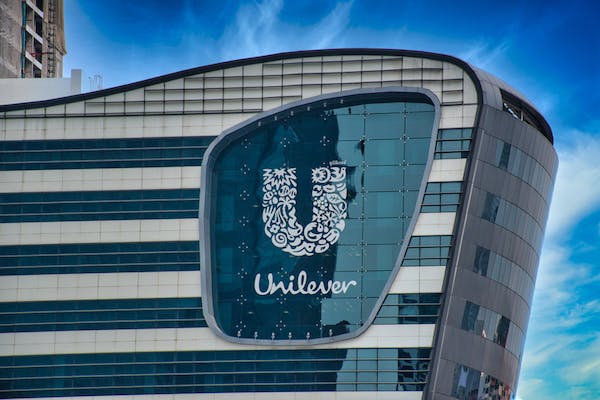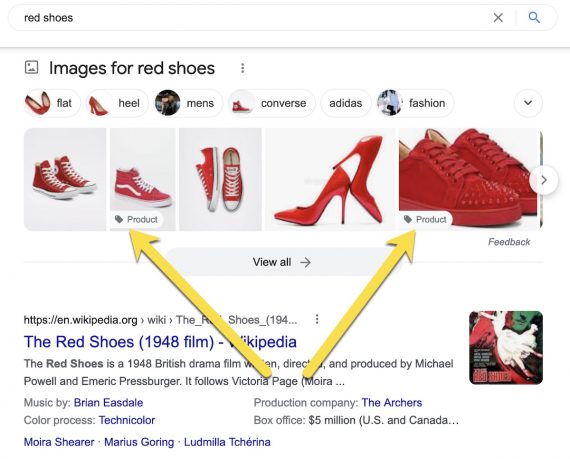
“David Attenborough recently joined Instagram and broke records,” she says. “That really tells us about the other pandemic we’re experiencing in the world right now, and that’s around environmental disaster. People are making really purposeful choices about the things that they buy, and making that conscious choice.” Hennah cites the success of Unilever’s Seventh Generation brand, which it sells exclusively on Amazon, as evidence of this.
The big shift to ecommerce
“People who are shopping online have a much bigger repertoire,” she says. “What we have seen is that they are buying over 10% more in terms of their shopping baskets; certainly, for us, an online shopper is that bit more valuable.”
— UnileverUSA (@unileverusa) September 23, 2020
Finally, Hennah explains the importance of designing for ecommerce, and again, how crucial it is to align with changing consumer demand – which also means tapping into new areas of opportunity.
“Really what this has meant for us is staying true to our strategy but accelerating it in a way that we hadn’t expected. That, for us, is across three areas: the portfolio transformation, so ensuring that we are creating portfolio that’s fit for ecommerce; deploying content that really converts, and spending more on platforms such as Amazon; and making sure our execution from supply chain to online availability is really in point.”
As well as making more considered retail partnerships, such as with Amazon, Unilever has really honed in on simple optimisations that make a big impact.
New shoppers = new opportunity to drive growth
But has consumer behaviour changed over time? Hennah explains how consumers have adapted their habits as the year has gone on.
For FMCG, this growth has been fuelled by the need for essential goods, which has in turn resulted in the emergence of new online shoppers.
“If you can’t go physical shopping or you’re only allowed to a small number of shops, you need to get your essentials. Some of that online shopper penetration has happened between France, the UK, the US and even the most mature market, China,” explains Hennah. “But what we’re also seeing is new cohorts coming online – even my own parents have shopped for their groceries online for the first time. We are seeing people 50+ really start to shift a number of their shopping trips to online and in particular online grocery. New shoppers, new opportunity to drive growth.”
“As a manufacturer, we are really looking at design with the business model in mind and asking ‘what does the consumer really want in some of these spaces?’”
“We certainly see a differentiation by business model. But there is also higher fragmentation in a way we haven’t’ seen in bricks and mortar. So, where do you choose to play, what are the demand spaces of growth that people are looking for? Ultimately, if you invest too late, there is a higher cost to pay.”
“On example from our UK team is where they just changed a product title to include ‘anti-bacterial handwash’, she says. “That title was changed and within half an hour the sales doubled. Sometimes the most ‘brilliant basics’ have the biggest impact, and that also comes through to killer content.”
Consumer behaviour that’s predicted to stick post-pandemic
Unilever has just emerged from its biggest quarter, where it saw a growth of 76%.
“It’s clear that many retailers are investing in ecommerce in a way that perhaps they hadn’t even expected to. We’ve seen Amazon recruiting heavily into their dispatch centres, and Instacart recruiting over 300,000 new workers,” says Hennah.
Unilever’s most recent launch in a new brand called ‘Find Your Happy Place, which is exclusively available at Walmart in the US. Along with new portfolio investment, Unilever is intent on ensuring that it stays on top of key factors like online availability and delivery.
Despite the clear shift to ecommerce in markets like the US and UK – the same rate of growth has not been seen everywhere.
“From pick up to click and collect to instant delivery – there are so many different economic impacts when we think about the type of delivery a consumer chooses. Cracking home delivery is a challenge for retailers and manufacturers. It’s expensive, it adds £3, £4, £5 pounds of cost that we haven’t traditionally had to think about in brick and mortar. Cracking some of these issues becomes very important as we work with our retailers.”
Hennah breaks down how Unilever has accelerated and sharpened channel choices, and how it is striving to remain relevant as we head into 2021.
Secondly, Hennah point to the conscious consumer.
Adapting the ecommerce portfolio, online content, and supply chain
“Since the second lockdowns the growth has continued – France are already seeing a 60% growth since the second lockdown. Even in the most advanced markets, we are still seeing lots of opportunity for channel shift coming through.”
“Really, we have seen this growth across every single business model, but omnichannel is one part of the business that has seen big, triple digit growth, particularly in markets like the US,” says Hennah.
“As the pandemic started, we were seeing people getting very concerned. Naturally people were looking for things like hand sanitiser,” she says. “As we moved into lockdown, the stock-up behaviour really emerged, such as the hoarding of toilet paper. As lockdown became a reality, we all started to shift to ‘how am I going to entertain my children’ and ‘how am I going to entertain myself?’ and that’s when we started to see things like ‘Nintendo Switch’ enter search behaviour. We saw people searching for leisurewear or really invest in workout equipment at home.”
For Unilever, there are three types of consumers that it predicts will stick around after the pandemic subsides. First is what it calls the ‘E-Everything’ consumer.
“We also saw a big increase in people looking for how-to’s – asking questions like ‘how do I wash my hands?’ or ‘how do I look after my skin when wearing a mask?’. But I don’t think anybody expected to see the huge volume of search data showing people looking for bleach, which was really led by one particular person in the US…”
“It is a great brand to sell online but really there is some storytelling that you need to do. So, when it comes to people caring about their immunity and wellness, people want that education factor. They want to know ‘what does this vitamin do for me?’ and ‘how should I use it?’ – that storytelling becomes really important.”
Hennah cites the Unilever brand, Olly Vitamins, as another example of how to engage consumers looking for educational content around wellness and immunity.
“When people are not necessarily buying online but who are doing a lot of their research online. If you’re going to the shop you’re a lot more purposeful – you need to go, and you might not be enjoying shopping in the same way as before, but you want to make sure that the shop has what you want in stock,” she says. “So your ability to research and get in and get out is more important.” For Unilever, this has highlighted the need for factors such as contactless technology, and the importance of having a ‘light touch’.
The importance of logistics (and tapping into new areas of demand)
“For Unilever, in China, already 30% of our sales come from ecommerce, so it is a very advanced and mature market”, Hennah explains. “However, if you take another market such as Mexico, clearly the ecommerce shift has not been as prominent. Even though we have seen these big accelerations in channels, every market has come from a different place.”
Hennah also explained the ‘category focus’. “What we believe is that hygiene and staying clean will remain of high importance, but along with that, immunity and wellness, and an investment to make sure that you are as well as you possible can be from the inside out.”
However, Hennah adds that “This year, we have seen some things that have caught even us by surprise. With the lockdowns it is no surprise that we saw a real shift from people looking for restaurants to fast delivery (instead).”
Interestingly, Hennah suggests that people who shop online or in multiple channels are more valuable than brick-and mortar shoppers.
“When I look at pure play retailers, people might be searching for things that they might not get in traditional brick and mortar stores. An example might be hair treatments – you might not find some of that in your supermarket so you might naturally start to look online”, she suggests.
“Like it or not, the channel shift is here to stay. We really need to think about the complexities and the profitability ahead.”
Ecommerce Quarterly: Q4 2020
We’re excited to be part of the @Amazon #ClimatePledgeFriendly program. Together, we are making it easier for customers to shop more sustainably. Learn more about it here: https://t.co/gnPLBKbxOE. pic.twitter.com/9wqwFVmloE
Overall, it’s a been a big year for the industry, with Hennah commenting that “In 2020, FMCG shares have made a decade’s worth of gains…”





